Review: Sony Xperia X1
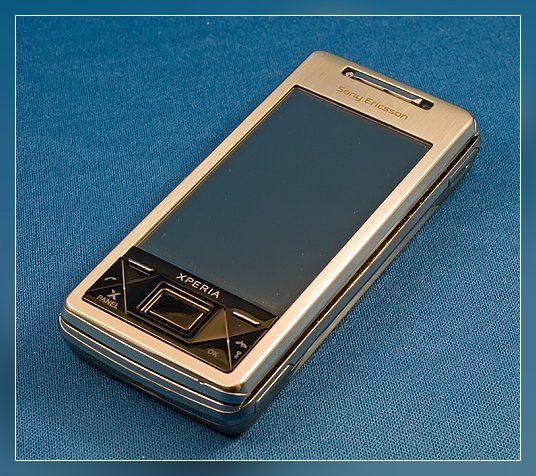
Sony's Xperia X1a created a rather lengthy story line last year in anticipation of its release. While they are now available at local Sony Stores and other outlets, Dieter was fortunate enough to capture one while attending MacWorld in San Francisco. I was able to get Dieter to look the other way and took off with it. I only had the weekend with the Xperia X1a before the alarms sounded and a massive manhunt began. Luckily, I had it long enough to take it on a test run to see if all the excitement surrounding the Xperia had any merit. As the saying goes, "Read on after the break" to see what type impression the Xperia made.
First Impressions
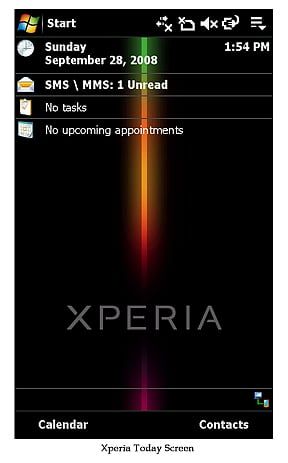
The Xperia comes boxed nicely in a foam padded insert that rests inside a box within the main box. It felt strange holding the Xperia X1a for the first time. After handling so many plastic shelled phones, it was odd to handle one with a metal shell. The brushed aluminum is no where near the finger magnet that the more common black, shiny plastic cases do. In holding the X1a, your first impression is that the X1a is solidly built and after having handled the device, the reports of the X1a cracking becomes a little surprising. Measuring 4.3" x 2.07" x .66" the X1a weighs in at 5.11 ounces. The X1a is about half an inch longer than the HTC Fuze but feels a touch thinner. The weight between the two are comparable. The sliding keyboard extends/retracts smoothly and unlike the HTC Fuze, the slider extends at a slight angle.
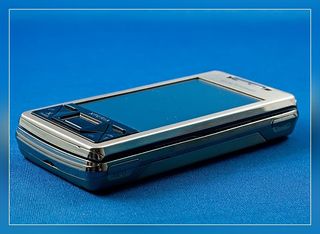
The X1a comes packaged with a charging/sync cable, battery, earbuds, CD and user guides. The X1a is powered by a 1500mah battery and much like the Treo Pro it takes a little effort to remove from the phone. You have an indention in the battery panel on either side of the X1a. You have to push up on the sides with these indentions and the panel pops off. After taking the panel off a few times, I found it a little easier to remove if you hold the Xperia facing up and pull down by the sides of the battery panel. It's seated rather tight which isn't necessarily a bad thing.
The large 800x480 screen dominates the face of the X1a. Below the screen is the optical trackpad, answer/end buttons, soft keys, panel button and "ok" button. The resolution and colors of the screen are exceptional. The X1a may have one of the best screens on the market and it is very receptive to the touch. The brushed aluminum face plate doesn't sit flush with the screen but instead is raised. I did find the lip making it a little difficult to tapping the corners of the screen but it did help a little as a guide when scrolling. Personally, I like the flush screen (e.g. HTC Fuze, Treo Pro) simply because it's easier to clean and I'm afraid dust, lint or dirt will find its way between the face plate and screen.
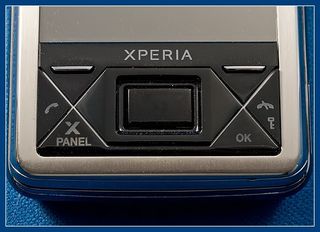
Below the screen is the optical trackpad, answer/end buttons, the "ok" button, Panel button and two soft buttons. The soft buttons are mappable and thankfully, when in use, the buttons are backlit to highlight their function. Granted, the more you use the buttons the more familiar you become with the layout. The only other experience I have to compare the X1a's optical trackpad is with the Samsung optical pads. The Sony pad is much more user friendly and is surrounded by a four way button should you choose to navigate the old-fashion way. The pad itself acts as a confirmation/enter button. You can adjust the sensitivity of the trackpad or turn it off entirely.
The X1a is fitted with a standard 3.5mm headphone jack (something that should be an industry standard) and charges/syncs through a mini-USB port (another good idea for an industry standard). Rounding things off is a 3.2 megapixel camera. The camera has a dedicated shutter button and is operated while holding the camera horizontally.
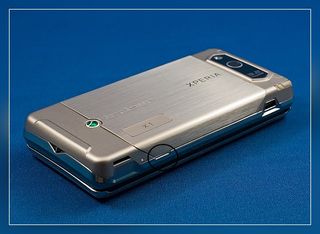
The X1a is powered by a Qualcomm MSM7200 528MHz processor and comes fitted with 256mb RAM and 512mb ROM. A microSD card slot allows you to expand the X1a's memory as needed. In comparing it with the HTC Fuze, which also has a 528MHz processor, the Sony moves along at the same pace but with a little more zip in some areas. Screen rotation is noticeably faster with the Sony when you extend the keyboard.
Get the Windows Central Newsletter
All the latest news, reviews, and guides for Windows and Xbox diehards.
Unlike the HTC, the X1a does not have an accelerometer. This is a little bit of a surprise for a device as well-made as the X1a. You can manually rotate the screen but simply holding the device in the horizontal position won't rotate it. The X1a is Bluetooth/WiFi capable with built in GPS.
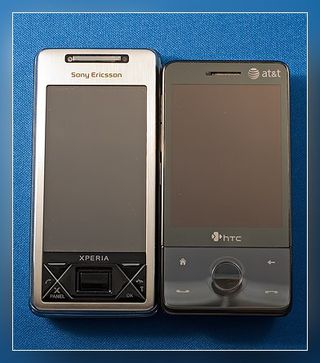
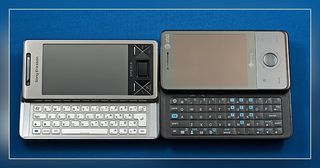
Most will compare the Xperia's keyboard with the HTC Fuze's keyboard. Not to break tradition, the X1a's keyboard is physically narrower than the HTC's and has fewer keys/functions. The keys are spaced apart more on the X1a making typing a little easier but the narrower space gives it a cramped feeling for those with larger hands. The one aspect of the keyboard that screams at you like a Banshi is the lack of functionality. There are no directional keys on the keyboard which requires you to use the optical trackpad to scroll around the screen. You don't have near the number of function keys and not a single "hot key" to launch an application such as email. While you have some symbols on the keyboard (accessible by using the alternate key), you have a "SYMB" key that pulls up a symbol chart on the touch screen. I liked the keyboard "feel" better with the X1a but the functionality of the HTC keyboard is much better.
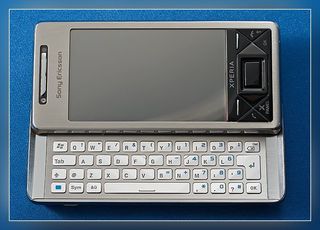
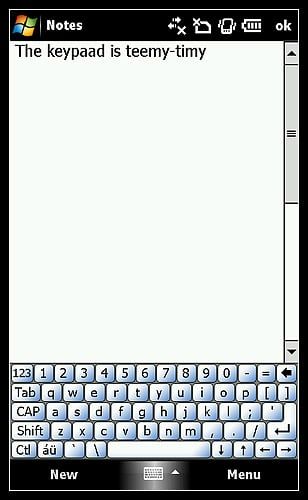
There is a virtual/on-screen keyboard available but the keys are tiny (even at the large setting). The screen keyboard can be set to block recognizer (similar to graffiti on the old Palm devices), QWERTY keyboard, Letter Recognizer, Symbol Pad, and Transcriber (allows you write anywhere on the screen and the X1a recognizes the text). Luckily the X1a comes with a stylus for those times you just have to use the on-screen keyboard and has a physical keyboard to help minimize those times.
Software
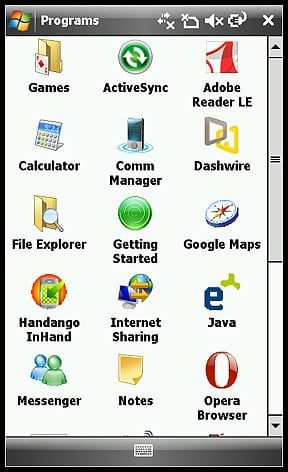
I was a little underwhelmed with the preloaded software that came with the X1a. Then again, being an un-branded phone you don't get all the bloatware associated with an AT&T, Verizon, Sprint, etc. device. The Xperia has the standard applications along with Mobile Office, Opera Browser, Google Maps, Windows Live and a Handango app that is a quasi-app store.
Panels
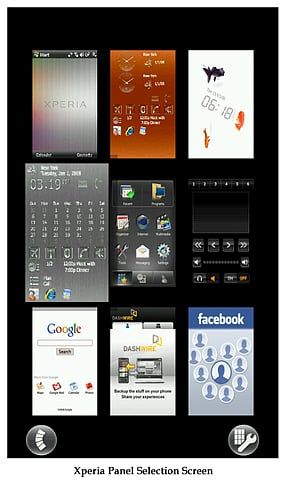
It's impossible to look at the X1a without discussing panels. Panels are similar to the pages of HTC's Touchflo 3D but, for the lack of a better term, in panel form. You have two panel styles that present the basic user information such as date/time/calendar, unread message counts, BT/Radio/Ringer status, plus a program launcher. You also have panels for specific tasks such as a media player and as well as a panel that highlight Google. You can highlight a single panel or display multiple panels. Sony includes a novelty panel that displays the date and time in a fish bowl setting that includes the fish. Tap the screen and the fish swims away as if you're tapping the glass of an aquirium. All in all, the X1a has room for nine panels at a time.
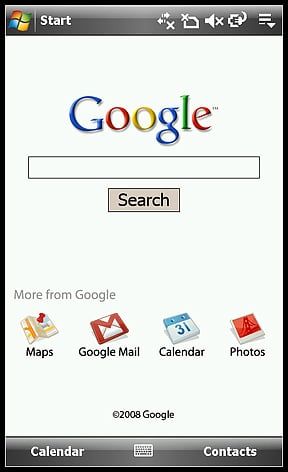
The panel concept brings more accessibility to your "home" screen. Additional panels are available online including panels for Facebook, WIndows Live, Dashwire and SPB Mobile Shell. There's even an unofficial panel creation tool. The most useful panel I tested was SPB's Mobile Shell which is a shell of the the Shell. Here is where you can find the Speed Dialing feature I was hunting in the form of the Contacts Page. The Facebook panel is an interesting panel in that it will show you the status of all your friends as well as access to Facebook messaging.
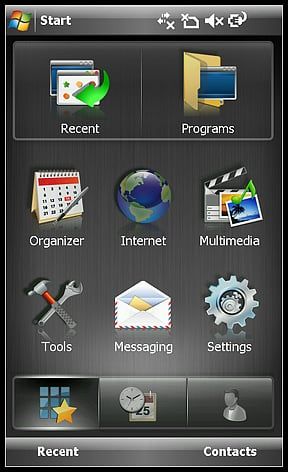
I was skeptical about the panels but after using them over the weekend found them to be a strength to the X1a. The Mobile Shell Panel was the better suited "main" panel and with the dedicated panel button, switching was a breeze. The only nit I have with panels is that when you turn the Xperia off, when you power it back up you start at the Today Screen. It would be nice if you choose to park your X1a on the Google Panel that when you power up, you return to the Google Panel.
Performance
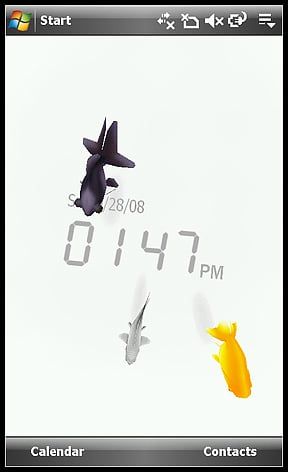
The diverse functionality of Windows Mobile devices is so great that you tend to forget these devices are phones. Call quality with the Xperia X1a was very good. I had no problems hearing calls or having callers hear me. At times it was a little difficult to adjust the volume because of the smaller key which is noticeably smaller when compared to other phones. I couldn't find any form of speed dialing (similar to the People Page in TouchFlo) but the screen keypad is easily activated by pressing the answer button. As much effort as Sony has put into the panels, I'm surprised there isn't an option for speed dial buttons. Another drawback to the keyboard is that you can't dial from it.
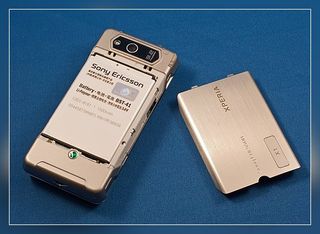
As mentioned, the Xperia is powered by a 1500mah battery. Sony reports battery life to be up to 833 hours of stand-by time and up to 10 hours talk time. I don't know how accurate the 833 hours is but I started using the Xperia on Friday afternoon with a fully charged battery and on Sunday, the battery was still hovering around the 50% mark. Granted I didn't have the demand on the phone on the weekend as I do during the week but I did put the Xperia through the ringer (everything from WiFi use to GPS use to phone calls) and was impressed with the battery life.
Again, the panels really made the X1a's User Interface very accommodating. It got to the point that I relied more on the panels and never hit the Start Menu. One handed operation wasn't as easy with the X1a as it is with the HTC Fuze or Samsung Omnia. Dialing was easy but if I had to type text, the on-screen keyboard was very cumbersome.
Overall Impression
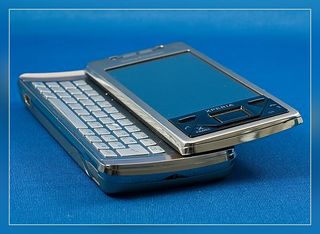
The one question I had for the Xperia X1a was "is it worth the price?". The X1a is priced in the neighborhood of a quality laptop computer and considerably more than the HTC Fuze/Touch Pro, it's main competition. To be blunt, I found it difficult to see how you could justify spending that much on the Xperia when you could own the Fuze/Touch (or any other WM device) at a considerably lower cost. While my time with the Xperia was limited, it was clear that the X1a is a very, very good Windows Mobile device. Unfortunately, its biggest weakness is its price.
The construction is solid and the aluminum body is a refreshing break from the plastic shells that other phones have. It may sound superficial but it's also nice to use a phone without having to wipe it clean of fingerprints after each use. The slider felt solid and movement was smooth. No question the screen is a quality feature of the X1a, although at times I thought the text was a little on the small side.
For the cost of the Xperia, you would have thought that Sony would have used a more functional keypad. While the keyboard is well constructed, it lacks the range of functionality that the HTC Fuze's keyboard has. The optical pad was receptive and functional. It was a noticeable improvement over other optical pads. The 3.5mm headphone jack, mini-USB port, and dedicated camera button are also positive features of the X1a.
Absent a dramatic price drop (which may come if a carrier picks up the X1a) you can't ignore the price tag on the Xperia. If you are in the market for a sliding keyboard styled Windows Mobile device you may want to look at the Fuze/Touch Pro. It is just as, if not more, capable than the X1a and at a considerably lower price. However, just looking at the feature and performance of the X1a (taking price out of the equation) here's how I'd rate the Xperia X1a.
| Ratings (out of 5)Speed/Responsiveness: 4.5/5Build: 5/5Screen: 5/5Call Quality: 5/5Keyboard:4/5 (lacks functionality and a little on the narrow side)Overall: 4/5 | ProsPanelsVery good build qualityExceptional Screen3G, WiFi, GPS, BluetoothConsRestricted KeyboardTerrible on-screen keyboardPrice |
Phil is the father of two beautiful girls and is the Dad behind Modern Dad. Before that he spent seven years at the helm of Android Central. Before that he spent a decade in a newsroom of a two-time Pulitzer Prize-finalist newspaper. Before that — well, we don't talk much about those days. Subscribe to the Modern Dad newsletter!
